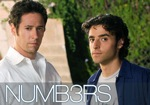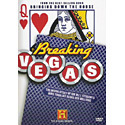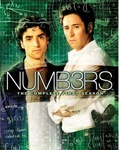 Regular Grey Matters readers realize that I'm not just a fan of learning about new concepts and ideas, but also of finding clearer and better ways to communicate those concepts and ideas to others.
Regular Grey Matters readers realize that I'm not just a fan of learning about new concepts and ideas, but also of finding clearer and better ways to communicate those concepts and ideas to others.
When you get that aha! moment where you truly understand a concept, or at least start to do so, there's a wonderful feeling of getting past the frustration. In today's post, we'll look at some places that encourage that moment by teaching various concepts clearly and simply.
One of the topics people have a tough time with is physics, the study of matter and how it moves through time and space. The MinutePhysics YouTube channel does a wonderful job of giving an overview of even seemingly difficult physics concepts. For example, this video explains how Einstein deduced the existence, and even the size, of atoms:
For a wider variety of topics, there's CGP Grey's YouTube channel. CGP Grey has a knack for picking topics that make you say, “I've often wondered about that, but never took the time to find out!” For example, as I write this, it's a leap year, so what exactly is the deal with leap years?
Although it's not a YouTube channel per se, the various videos of the “Charlievision” sequences from the show Numb3rs are a wonderful way of explaining complex mathematical concepts. Here's how Numb3rs summed up what is known as the knapsack problem:
Video isn't the only way to grasp new concepts, of course. I've referred to BetterExplained.com numerous times, in praise of their way of presenting insights. At the beginning of A Visual, Intuitive Guide to Imaginary Numbers, the author explains some of his secrets, which focus on analogies, relationships, and visual diagrams whenever possible.
One part of BetterExplained.com you may not be as familiar with, however, is their aha! moment section, where you can share with others the insights that worked for you. As the video below explains, it's a sort of Twitter meets Wikipedia (Twittipedia?):
One of my favorite posts there shares a handy insight from purplemath.com for remembering how to determine the proper sign when multiplying with negative numbers:
good things (+) happening to good people (+): a good thing (+)The final site in this post is a fascinating corner of reddit, called Explain Like I'm Five. There, you can post questions, and others will try and explain the concept to you as clearly and simply as possible. If you know an answer to a posted question, and can answer it in a clear and simple manner, you can post a reply yourself.
good things (+) happening to bad people (-): a bad thing
bad things (-) happening to good people (+): a bad thing
bad things (-) happening to bad people (-): a good thing (+)
They also try and preserve the best answers given in the past, in a post they call The Five-Year-Old's Guide to the Galaxy. You'll find it's not hard to lose a lot of time finding simple answers to things you've probably wondered about frequently.
These sites may not go into every last detail needed to master the understanding of a concept, but that's OK. The general gist of all of them is to help you grasp the basics, and give you a strong foundation from which to explore each idea further.
If you have any sites where you regularly find clear and helpful insights, please share them with us in the comments!




 Time to geek out, and I have just the sites to help you do it!
Time to geek out, and I have just the sites to help you do it! December is here, and so are this month's
December is here, and so are this month's  In my
In my  There are plenty of places you can find
There are plenty of places you can find 

 While memory feats can be amazing on their own, a reason for performing them can help make them far more interesting to your audiences. Here are a few plots I've come up with to use as starting points for memory feat presentations. I developed these on my own, and they're original as far as I know.
While memory feats can be amazing on their own, a reason for performing them can help make them far more interesting to your audiences. Here are a few plots I've come up with to use as starting points for memory feat presentations. I developed these on my own, and they're original as far as I know.



 Imagine you and another person are arrested by the police. The police don't have sufficient evidence for a conviction, so the police split you and this other person up into different rooms. They offer you and the other person the same deal. If both you and the other person stay silent, both of you will wind up spending 6 months in jail (the police have enough evidence for a lesser charge). If both you and the other person agree to testify against each other, you will both spend the next 2 years in jail. If one agrees to testify for the prosecution, and the other person remains silent, the one who testifies will go free, while the one who remains silent will go to jail for 10 years.
Imagine you and another person are arrested by the police. The police don't have sufficient evidence for a conviction, so the police split you and this other person up into different rooms. They offer you and the other person the same deal. If both you and the other person stay silent, both of you will wind up spending 6 months in jail (the police have enough evidence for a lesser charge). If both you and the other person agree to testify against each other, you will both spend the next 2 years in jail. If one agrees to testify for the prosecution, and the other person remains silent, the one who testifies will go free, while the one who remains silent will go to jail for 10 years.

